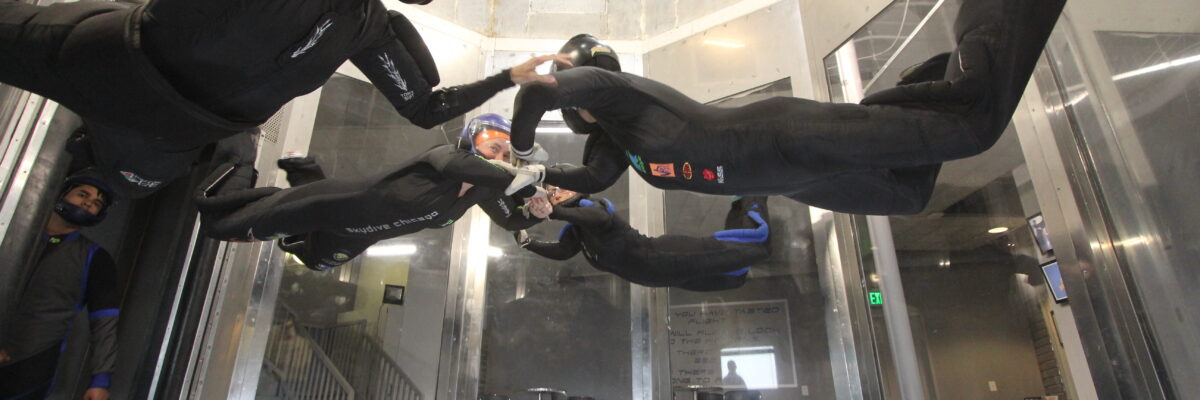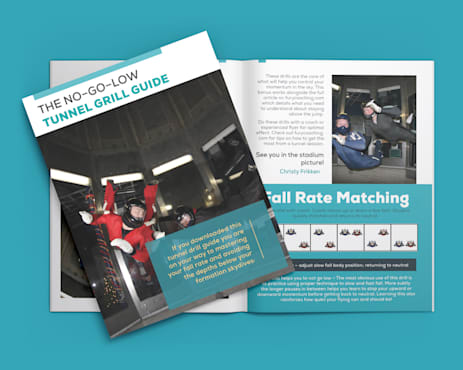How to Start Tunnel Linked Entrances
Monday, November 1, 2021

Tunnel Exits or Entrances, which is it?
I’m never sure of the terminology– Are we entering the tunnel? Or exiting the antechamber? I think I default to “exit” just because it parallels to an airplane exit.
Whatever you call it, this is a quick strategy guide on how to get into a wind tunnel as a group.
Motivations
Competitions at higher levels will start the clock when someone starts flying. To minimize the time to the first point, teams will exit in a clump to get the party started.
They are also fun! In training, it is an excellent way to delineate a competition style dive from a drill dive. I don’t do them every flight though – the line up sucks up too much tunnel time.
Ready for Launches?
It is ideal for everyone to know how to walk in and out of the tunnel comfortably before launching a 4way exit. At most meets, less experienced teams will start from flying a star or touching the walls because of this.
If you want to experience a launch, but aren’t quite up to walking yet, you can launch 2ways with a coach!
Before I forget
MAKE SURE THE WIND IS ON. Put someone in charge of checking the monitor for the number, getting a nod from the tunnel instructor, or just making sure it is at a flyable level. If you forget this step, please post the video and tag Fury Coaching.
Unlinked vs. Linked
The first decision is to exit holding on to grips already or to exit together not touching.
Gripped up is faster, but it takes more flight precision. It can have the tendency to drop out, fly too far, or even stall the wind in older tunnels. The risk is creaming into the glass or bouncing on the net.
Less risky and only slightly less fast is to exit together not touching. Teams that don’t do this regularly or teams that are just starting should roll with this plan.
Competition Rules Differ
Every competition seems to have slightly different rules. The more extreme rules start the clock when someone’s head and shoulder’s pass by the door frame. The more common standard is the clock starts when someone has both feet flying.
Ask concrete questions about the entrance if it isn’t made clear in the rules and brief!
Rotating your Formation In the Door
When you start trying exits, you’ll probably stick to one configuration. The outside center is partially in the wind and the inside center is entirely in the antechamber giving the count. Point and Tail are clinging to the sides of the door frame.
But as you improve, you can rotate the formation to your advantage. For example, it might be smoother to launch the 22 with the tail in the ante-chamber since. If you launch regularly, experiment with different angles and slots to get a natural start for the first formation.
Outside wing slots and flipping
The two people (point and tail often) clinging to the outsides of the door frame can be faced in or out. Inwards has both hands and one foot facing towards the antechamber. Outwards is just flipped- one hand on the door frame, one foot on the door frame, and the other foot pressed on the glass for a push-off.
Whether you are preparing for a big wind tunnel meet or want to try it for fun you should give launching a try!
Tags: bodyflight, competition, Tunnel



